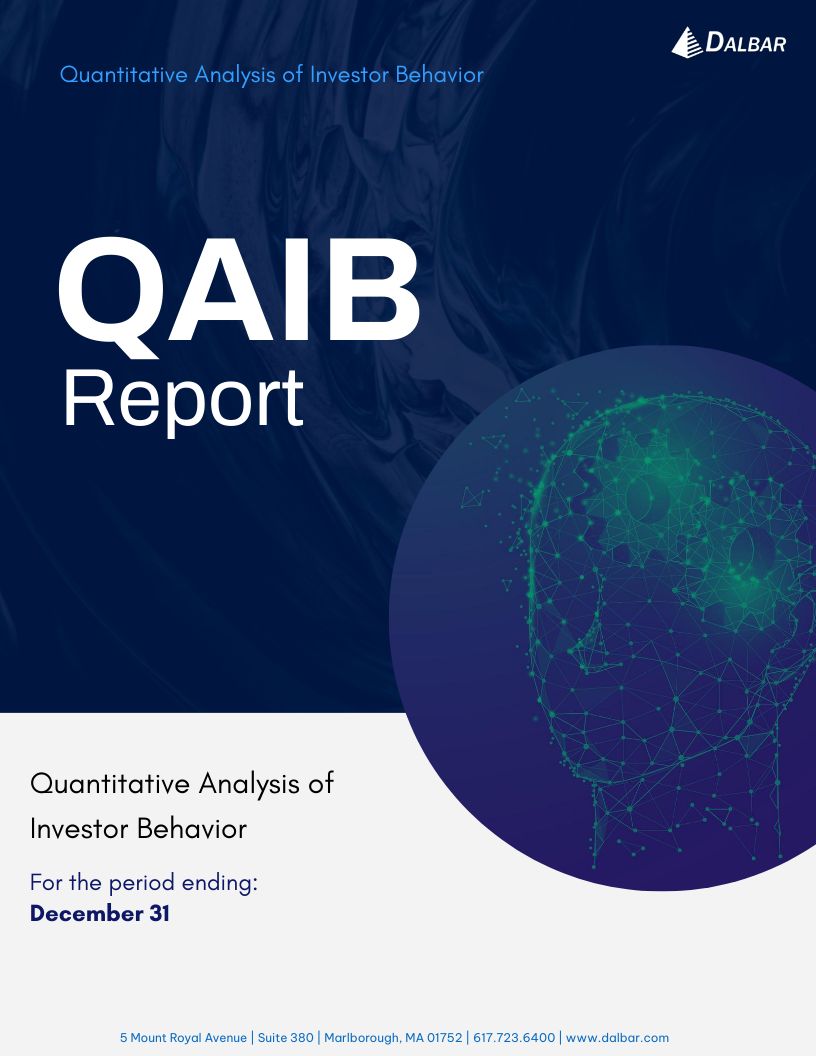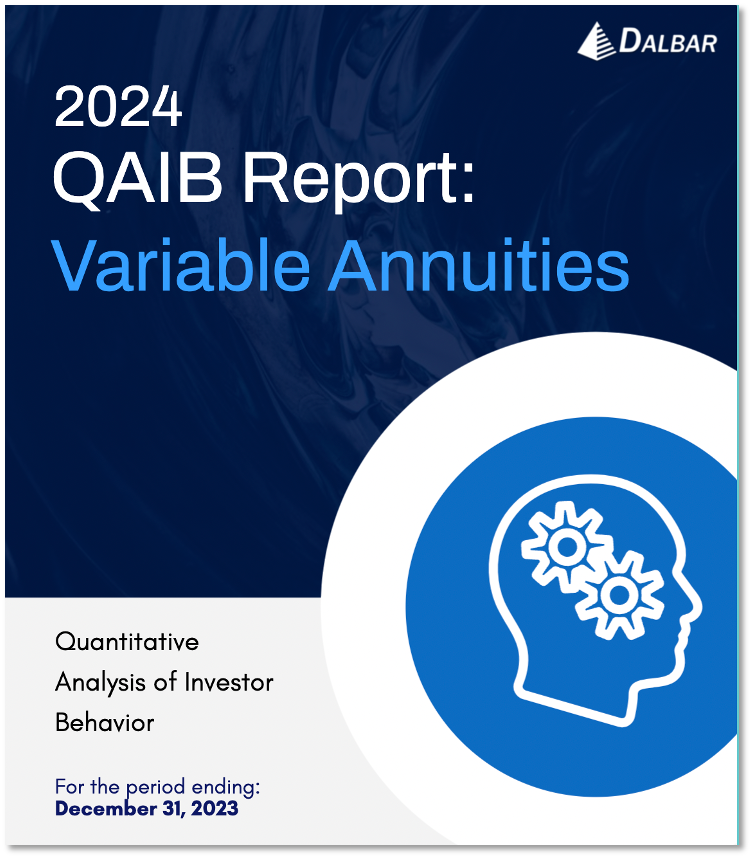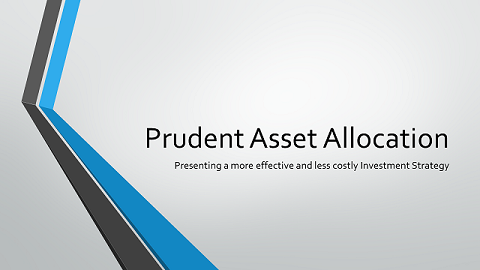.png)
Since 1994, DALBAR's Quantitative Analysis of Investor Behavior (QAIB) has measured the effects of investor decisions to buy, sell and switch into and out of mutual funds over short and long-term timeframes. These effects are measured from the perspective of the investor and do not represent the performance of the investments themselves. The results consistently show that the average investor earns less – in many cases, much less – than mutual fund performance reports would suggest.
The goal of QAIB is to improve performance of both independent investors and financial advisors by managing behaviors that cause investors to act imprudently. QAIB offers guidance on how and where investor behaviors can be improved.
This 28th Annual QAIB report examines real investor returns in over 20 different categories of investors. The analysis covers the 30-year period to December 31, 2020,which encompasses the crash of 1987, bull market of the 90’s, the drop at the turn ofthe millennium, the crash of 2008, recovery periods leading up to the most recent bull market, and the unprecedented events of 2020.
Why do I need QAIB?
Find out how advisors use QAIB materials to mitigate return destroying behavior.
QAIB Store
Visit the store to browse the many tools and resources available to advisors and institutions.
QAIB News
Read what people are saying about DALBAR's annual study and see how this research is used when discussing investor behavior and market topics.
Importance of QAIB
The best financial professionals double as behavioral finance coaches of their clients. When markets are down or even volatile, questions will arise from concerned clients and perspective will be needed. The QAIB report and materials give advisors the tools to tell a story, put things into perspective, and deliver the calming messages that are needed to mitigate return-destroying behavior. Such messages include:
- The prudence of a long-term, buy and hold approach
- The folly of measuring investment success against statistical benchmarks
- Awareness of common behavioral influences
- Lessons from past markets
- The importance of investing assets as early as possible
Frequently Asked Questions
How Much Does QAIB Cost?
The Full Study price is $975 and includes a Derivative Works license to use data in customized communications of up to 200 copies. Additional licensing is available for Derivative Works as well as Report Distribution.
The QAIB Advisor Edition is available on QAIB Advisor Studio, DALBAR's online portal for advisors for a subscription price of $250 per year.
How do I find out more information about QAIB Variable Annuity?
Download the Abstract for QAIB Variable Annuity here or email us for more information at QAIB@dalbar.com.
Can I use data from the reports in customized communications?
Most QAIB products allow the purchaser to use its contents in customized communications for production of a selected number of copies (see Copyright Agreement within the deliverable).
What is the difference between the Full Study and the Advisor Edition?
The Full Study, for $975 is the complete report and includes copyrights for purchasers to use the data in Derivative Works for up to 200 copies (for higher level licensing email colearylima@dalbar.com).
The Advisor Edition, available with a subscription to Advisor Studio, is an investor summary and excludes data found in the Full Study to make it more comprehensible to the average investor. This report is able to be customized for one Advisor and can be distributed in its entirety to the Advisor’s clients. Copyrights are included for subscribers of Advisor Studio for Derivative Works up to 200 copies.
How do I get a QAIB report that displays “Compliments of [my name]” on the cover?
Purchasers of the Advisor Edition are able to brand the cover to display the name of one advisor, his or her firm name, address, phone number and email. This will populate automatically using the information collected when downloading the edition from your Advisor Studio account.
How can I get a QAIB report branded with our firm logo on the cover?
Firms may purchase an Advisor Edition of the QAIB report and white label the cover with their logo for firm-wide client distribution (prices based on distribution level). Please email QAIB@dalbar.com with your request.
How Can I Share QAIB Data with the public?
Each item in the QAIB Store has copyright rules. These are listed on the store page for each item.
Can I share QAIB publicly through my website?
No. However, the Advisor Edition may be posted in its entirety under a password protected URL for the Advisor to share with clients.
If I lost the report, lost access to the report or my download is corrupt, how can I request another copy?
Please email QAIB@dalbar.com to request access to your purchased report.
Can I Get a Custom Analysis?
For more information on creating a custom analysis or presentation using the QAIB data and methodology, contact Cory Clark at QAIB@dalbar.com.
What is the “Average Investor Return”?
QAIB uses data from the Investment Company Institute (ICI), Standard & Poor’s, Bloomberg Barclays Indices and proprietary sources to compare mutual fund investor returns to an appropriate set of benchmarks. The study utilizes mutual fund sales, redemptions and exchanges each month as the measure of investor behavior. These behaviors reflect the “Average Investor.” Based on this behavior, the analysis calculates the “average investor return” for various periods. These results are then compared to the returns of respective indices.
How does QAIB Calculate Investor Profits or Loss?
QAIB uses the aggregate balances of mutual fund investors each month to calculate investor profits or loss after all performance limiting factors are considered. This reflects the market gain or loss that the average investor would see on a statement. Additional research is used to identify solutions that reduce the underperformance.
What Causes the Gap Between the Average Investor Return and an Appropriate Index?
Four factors cause the gap between investor returns and an appropriate index:
- Availability of capital to investors for the entire period being measured.
- Need for capital by investors before the end of the period being measured.
- Expenses and under performance of the funds.
- Investors’ irrational behavior, based on generally accepted but misleading opinions.
What Does Voluntary Investor Behavior Include?
Voluntary investor behavior includes:
- Delaying an investment decision
- Withdrawing funds before they are needed or withdrawing from a less than optimal source
- Reinvesting after there is evidence of a market recovery
Does Average Investor Return take into account fees?
QAIB measures assets after all costs and expenses are deducted and flows after all sales charges are paid. While some measures attempt to make adjustments for differing share classes and expense ratios, QAIB makes no such adjustments since only net assets and net flows are used.
Can QAIB returns be compared to fund returns as asset weighted returns can?
No. QAIB reports the returns that are most visible to most investors, the investor’s personal return and the most widely used indexes.
The decision to compare the most visible measures of return allows QAIB to reflect the investors' perception and therefore to properly define the problem.
Having defined the problem, methods have been developed and are being developed to narrow the gap between these two measures. QAIB presents an "investor's" view of the fund.
Asset weighted returns by definition ignore the time during which the investor is out of the investment and do not provide a measure of the lost opportunity. As such asset weighted returns are a “fund’s” view, reflecting only returns when money is in the fund.
Can soft dollars be used to pay for QAIB?
Soft dollars can be used to pay for this research. The QAIB research directly benefits investors and there is no distinction made in the regulations between economic research and behavioral research.
Glossary
Average Investor
The average investor refers to the universe of all mutual fund investors whose actions and financial results are restated to represent a single investor. This approach allows the entire universe of mutual fund investors to be used as the statistical sample, ensuring ultimate reliability.
[Average] Investor Behavior
QAIB quantitatively measures sales, redemptions and exchanges (provided by the Investment Company Institute) and describes these measures as investor behaviors. The measurement of investor behavior is the net dollar volume of these activities that occur in a single month during the period being analyzed.
[Average] Investor Return (Performance)
QAIB calculates investor returns as the change in assets, after excluding sales, redemptions, and exchanges. This method of calculation captures realized and unrealized capital gains, dividends, interest, trading costs, sales charges, fees, expenses and any other costs. After calculating investor returns in dollar terms (above) two percentages are calculated:
- Total investor return rate for the period
- Annualized investor return rate
Total return rate is determined by calculating the investor return dollars as a percentage of the net assets, sales, redemptions and exchanges for the period.
Annualized return rate is calculated as the uniform rate that can be compounded annually for the period under consideration to produce the investor return dollars.
Average Equity Fund Investor
The Average Equity Fund Investor is comprised of a universe of both domestic and world equity mutual funds. It includes growth, sector, alternative strategy, value, blend, emerging markets, global equity, international equity, and regional equity funds.
Average Fixed Income Investor
The Average Fixed Income Fund Investor is comprised of a universe of fixed income mutual funds, which includes investment grade, high yield, government, municipal, multi-sector, and global bond funds. It does not include money market funds.
Average Asset Allocation Investor
The Average Asset Allocation Fund Investor is comprised of a universe of funds that invest in a mix of equity and debt securities.
Average [Sector] Fund Investor
The Average [Sector] Fund Investor is comprised of a universe of funds that invest solely in companies that operate in related fields or specific industries. The following Average Sector Fund Investors were referenced in this report: Consumer, Health, Financial, Tech/Telecom, Real Estate, Precious Metals, Utilities, and Natural Resources
Average [Capitalization and Style] Fund Investor
The Average [Capitalization and Style] Fund Investor is comprised of a universe of funds that are categorized by the types of companies in which they invest:
Small-cap mutual funds invest primarily in companies with market capitalizations of up to $2-2.5 billion.
Mid-cap mutual funds invest primarily in companies with market capitalization that generally ranges from $1 billion to $7 billion or in companies with both small and medium market capitalization.
Large-cap mutual funds invest primarily in companies with market capitalizations which are generally more than $5 billion or in companies with both medium and large market capitalizations.
Growth mutual funds invest primarily in common stock of growth companies, which are those that exhibit signs of above-average growth, even if the share price is high relative to earnings/intrinsic value.
Value mutual funds invest primarily in common stock of value companies, which are those that are out of favor with investors, appear underpriced by the market relative to their earnings/intrinsic value, or have high dividend yields.
Blend mutual funds invest primarily in common stock of both growth and value companies or are not limited to the types of companies in which they can invest.
Average Equity Index Fund Investor
The Average Equity Index Fund Investor is comprised of a universe of funds that are designed to track the performance of a U.S. equity market index.
Average Target Date Fund Investor
The Average Target Date Fund Investor is comprised of a universe of funds that follow a predetermined reallocation of assets over time based on a specified target retirement date.
Average Alternative Strategies (Alt-) Fund Investor
The Average Alternative Strategies (Alt-) Fund Investor is comprised of a universe of funds that employ alternative investment approaches like long/short, market neutral, leveraged, inverse, or commodity strategies to meet their investment objective. The following Average Alternative Strategies Fund Investors were referenced in this report: Alt-Domestic Equity, Alt-World Equity, Alt – Asset Allocation (“AA”), and Alt-Multisector Bond.
Guess Right Ratio
The Guess Right Ratio is the frequency that the average investor makes a short-term gain. One point is scored each month when the average investor has net inflows and the market (S&P 500) rises in the next month. A point is also scored when the average investor has net outflows and the market declines in the next month. The ratio is the number of points scored as a percentage of the total number of months under consideration.
Retention Rate
Retention Rate reflects the length of time the average investor holds a fund if the current redemption rate persists. It is the time required to fully redeem the account. Retention rates are expressed in years and fractions of years.
Inflation Rate
The monthly value of the consumer price index is converted to a monthly rate. The monthly rates are used to compound a “return” for the period under consideration. This result is then annualized to produce the inflation rate for the period.
QAIB Licensing
License DALBAR’s industry-renowned Quantitative Analysis of Investor Behavior (“QAIB”) report and enable financial professionals to access a free, customized Advisor Edition.
Give Financial Professionals a Powerful Tool to Help Curb Investor Behavior
Enterprises can purchase a license that enables groups of financial professionals to access a free, customized QAIB report. Report covers will read “Compliments of [PROFESSIONAL'S NAME]”.

Customized for Each Financial Professional to Share with Clients
Licensees receive a dedicated link and/or a unique code that they distribute to their financial professionals. Using the link and code, financial professionals customize and generate their free report. This research may then be shared with their current and prospective investor clients.
Distribution for Professional Use | |||
Licenses | Internal Use | External Use | |
This price structure is for distribution to professionals who are under the control of the purchasing firm, such as registered reps of a b/d or IARs of an RIA. | This price structure is for distribution to professionals who are not under the control of the purchasing firm, such as commercial partners and independent advisors. | ||
100 | $1,000 | $2,000 | |
200 | $1,750 | $3,500 | |
300 | $2,250 | $4,500 | |
400 | $2,750 | $5,250 | |
500 | $3,000 | $6,000 | |
Unlimited | $3,500 | $7,000 | |
QAIB Products
$250
For period ending 12/31/2024, this report is made for the average investor and designed exclusively to be a client facing communication. This version is customizable for one advisor and includes the rights to redistribute printed or electronic copies of the complete report to current and prospective investor clients.
$2,500
This report is the industry's most compelling argument for Variable Annuities. This VA research has turned heads with articles in the New York Times and IRI as well in the Seeking Alpha podcast!
$250
During times of crises, give investors an historical view of major market events and their impact on investor behavior. This package contains the 4 reports.
$250
A Prudent Asset Allocation practice, improves on the current arbitrary practices of asset allocation by protecting the assets necessary to fund investor needs. These protected assets are independent of market performance.

Looking for more than the typical 1, 3, 5? Generate Average Investor Returns based on your custom timeframes of over 25 different categories of “Average Investors”
Request a Quote

Would Investors Be Smart To Move Portfolios To Cash Now?
The stock market does not always inspire confidence in regular Americans. You may already be asking yourself, should I just get the heck out of the market entirely? If you already cashed out—perhaps months ago—should you stay out?
Cashing out is a defensive instinct that is easy to understand. Inflation is slowing, but it's still pretty high. Fears of recession are still looming. But in this market or any other, cashing out is not always the smartest way to protect your money.
- Forbes Advisor
- |
- 4/25/2023
- Go To Article
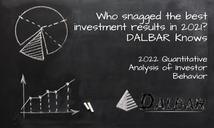
Who snagged the best investment results in 2021? Dalbar knows
Buy-and-hold investors in equity index funds, equity value funds and real estate sector funds earned the highest average returns in 2021. Investors in bond funds fared poorly, according to Dalbar's Quantitative Analysis of Investor Behavior (QAIB) for the period ending December 31, 2021.
The average investor has maintained an approximate 70% equity to 30% fixed income allocation since 2017, Dalbar said. Inflation for calendar 2021 was 7.04%. The highlights of the latest QAIB survey are below.
- Retirement Income Journal
- |
- 4/21/2022
- Go To Article

A 5-Year Cushion against Market Risk
Louis S. Harvey, the founder of Dalbar, a kind of J.D. Power for the financial services industry, analyzed stock market history and found that since 1940 US equities have always recovered, even in real terms, within five years of any crash.
He uses that finding-which might surprise a few people-as the basis for a portfolio asset allocation strategy that he's now sharing with the world.
- Retirement Income Journal
- |
- 1/20/2022
- Go To Article
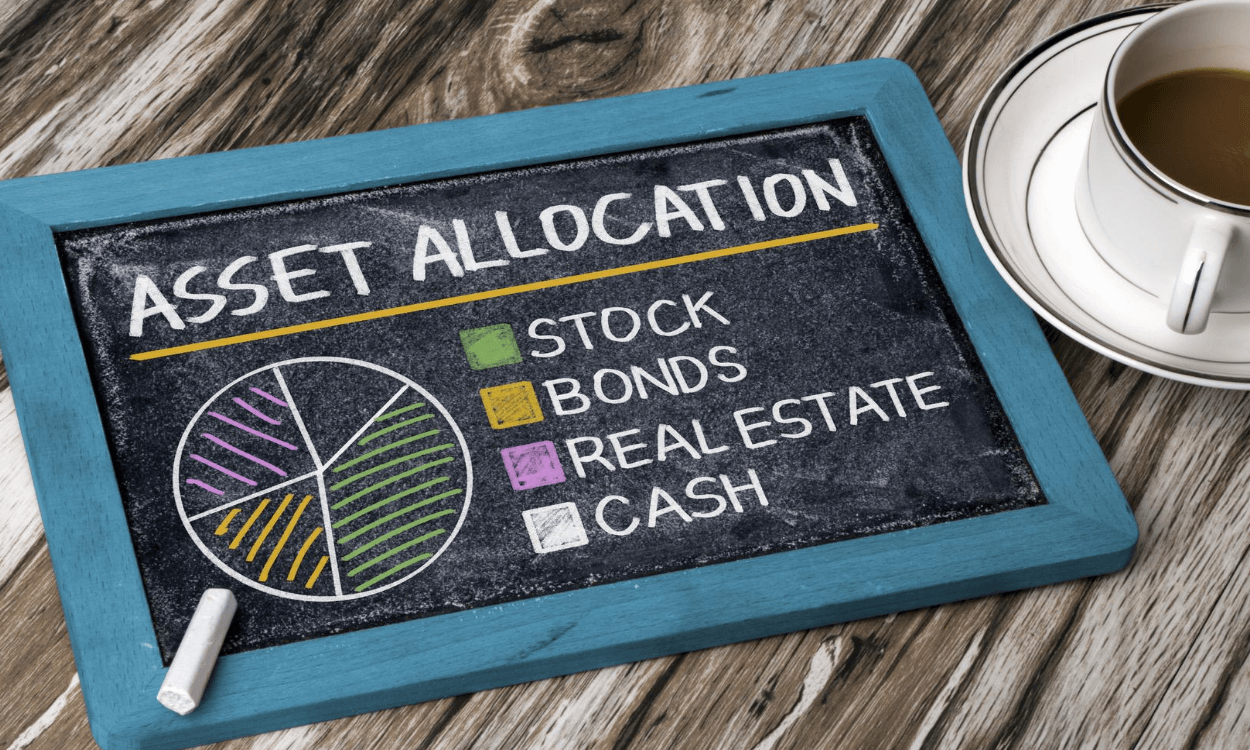
Standard Asset Allocation Models Are Wrong: Dalbar
Financial advisors who allocate client assets based on clients' cash needs for two to three years in the future are making a mistake, according to Dalbar, a financial services research firm.
In a new report, Dalbar founder and president Louis Harvey writes that asset allocations for clients should be based on their cash needs for five years because since 1940 five years was the longest period for the S&P composite index to recover its losses from any downturn.
''This is very seldom done,'' Harvey told ThinkAdvisor, adding that advisors who just focus on asset allocation and don't create financial plans often don't consider clients' cash needs at all.
- ThinkAdvisor
- |
- 1/11/2022
- Go To Article

Study Finds Do-It-Yourselfers Lack Key Retirement Info
Investors who don't know how much they have saved for retirement are less likely to arrive in those proverbial golden years with optimal financial results. But some two and half times more do-it-yourself investors than investors who hire advisors find themselves in that unenviable position, a new study on retirement readiness from Dalbar found.
In fact, some 17.9% of investors who decided to go it alone are in the dark about how much they've accumulated for retirement. In contrast, 7.4% of investors who work with an advisor did not know what their retirement balance is, according to the study, ''Got a Plan: A Study on Advisor Value from the Lens of Retirement.''
- Financial Advisor Magazine
- |
- 10/1/2021
- Go To Article

Retirement Readiness a Guessing Game for Most Investors
A recent study of 1,103 investors found that more than half (53%) had not developed a financial plan to fund their retirement in the last 5 years, and more broadly, found an alarming lack of knowledge among some investors related to their retirement savings.
- 401k Specialist
- |
- 9/30/2021
- Go To Article

Average Equity Investor Lagged S&P 500 By 2% in First Half, Dalbar Finds
The average investor's portfolio lagged the performance of the S&P 500 by more than 2.1 percentage points through June 30, the mid-year Dalbar QAIB report (Quantitative Analysis of Investor Behavior) study released today found.
The average return gap between the average equity fund investor and the U.S. equity market has widened considerably in the first half of 2021—doubling from last year, according to Dalbar, which has studied investor behavior for the past 27 years.
- Financial Advisor Magazine
- |
- 8/25/2021
- Go To Article
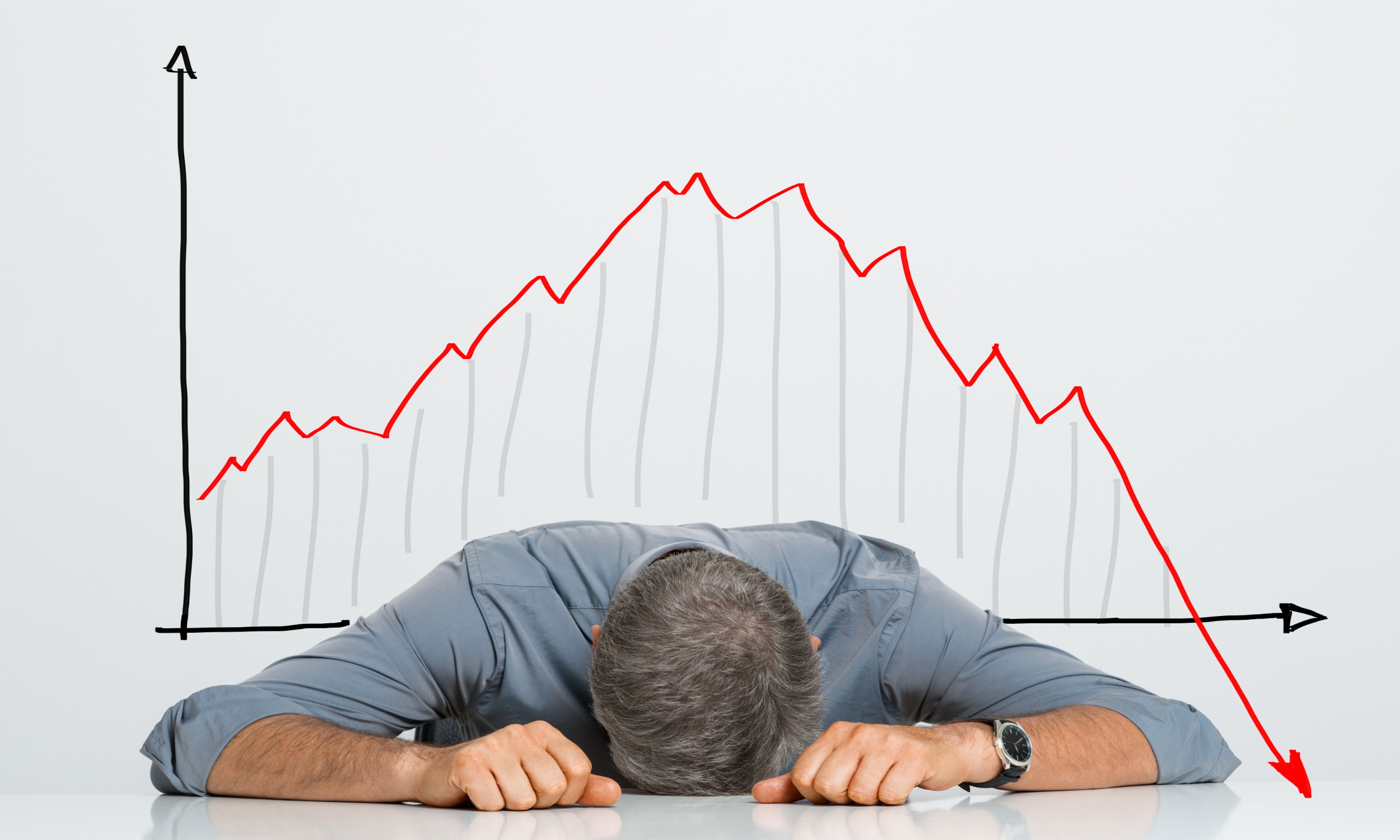
The Psychology Behind Your Worst Investment Decisions
When it comes to investing, we have met the enemy, and it's us. Excited by profit and terrified of loss, we let our emotions and minds trick us into making terrible investing decisions. ''As humans, we're wired to act opposite to our interests,'' says Sunit Bhalla, a certified financial planner in Fort Collins, Colo. ''We should be selling high and buying low, but our mind is telling us to buy when things are high and sell when they're going down. It's the classic fear-versus- greed fight we have in our brains.''
- Kiplinger
- |
- 7/22/2021
- Go To Article

The Real Reasons Clients Pay Advisors
The obvious consensus is that the client is convinced that they're better off with the advisor than without! This is the fundamental reason that clients pay their advisor despite the fact that lower-cost or zero-cost alternatives are available.
Being better off with the advisor is not about the advisor; rather, it is all about the client. Having seen volumes of material that describe why a client should use an advisor, I can tell you there is scarcely a note about how to make the client better off.
So how does the advisor make the client better off?
- ThinkAdvisor
- |
- 7/9/2021
- Go To Article

Variable Annuities: Winning By Not Surrendering
After all the analysis is done on rates, fees and performance, there is really one key metric that means more than the others - patience.
Great returns don't mean much if investors motivated by emotion or misplaced confidence in their market timing skills jump in and out of funds. When investors jump, those small gaps widen to large gulfs between what they accumulate and what they could have amassed for retirement.
- Insurance News Net
- |
- 6/4/2021
- Go To Article

4 Common Mistakes That Could Derail Your Retirement —and How to Avoid Them
This might be the most common mistake investors make—and unlike speculating on individual stocks or sitting on too much cash, it's a mistake that is a little harder to pin down.
When the market was at its most volatile earlier this year, ''investors did not run for the hills but they were making changes to their accounts,'' says Cory Clark, chief marketing officer of Dalbar, which found that nearly a third of investors working with traditional or robo-advisors reallocated their assets during the Covid market crisis.
- Barron's
- |
- 12/13/2020
- Go To Article

New Dalbar Offering Aimed at Helping Advisors Improve Investor Behavior
Dalbar has launched a new subscription-based interactive hub for advisors to communicate with clients to support and improve investor behavior.
The platform, known as QAIB Advisor Studio, is available for $250 a year for advisors (it varies for enterprise subscriptions), and is based on Dalbar's proprietary Quantitative Analysis of Investor Behavior. It will be updated throughout the year.
- ThinkAdvisor
- |
- 10/29/2020
- Go To Article

Active Fund Managers, and Women, Are the Stars of the Coronavirus Market Crisis
After years of lagging behind index funds, active managers have long stressed that they would show their worth when volatility hit. Now it has, as the coronavirus has roiled markets.
It is still too early for anyone to say ''I told you so,'' but a quantitative study of investors' behavior during the first half of this year by the financial research firm Dalbar may give defenders of active management some ammunition.
- Barron's
- |
- 9/1/2020
- Go To Article
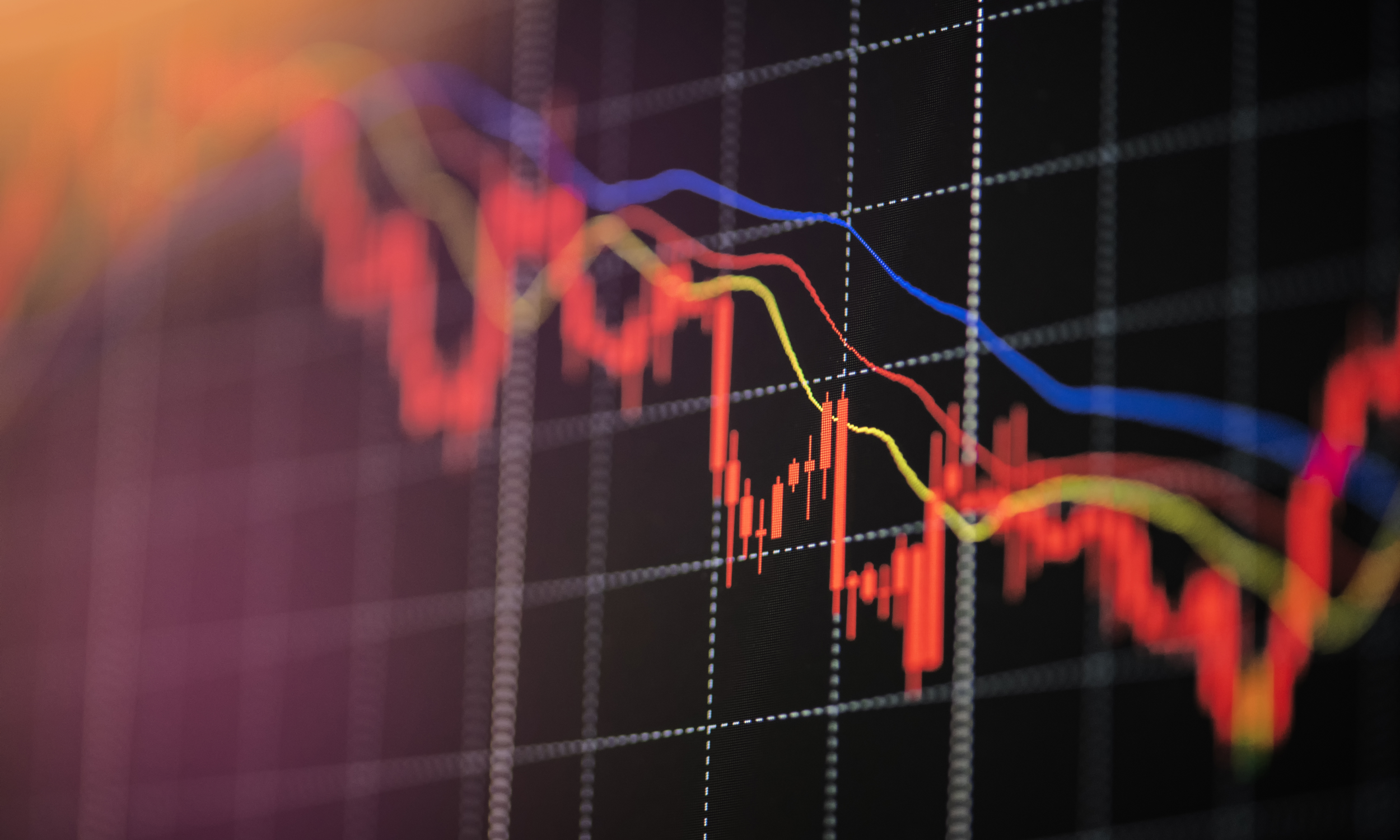
Flows into active funds outpace passive funds for the first time in eight years
Investors in actively managed equity funds fared better than investors in passive equity funds in the second quarter — and even outperformed the S&P 500, according to a new report.
The report, published by Marlborough, Mass-based DALBAR, Inc., found that the average active equity fund investor contributed assets in April, May and June while the average equity index fund investor withdrew assets during each of those months.
- Advisor's Edge
- |
- 8/31/2020
- Go To Article

Active Equity Fund Investors Beat Indexers in Q2: Dalbar
The second quarter was not only an exceptionally strong one for U.S. stocks but also an especially strong quarter for investors of actively managed equity funds.
According to a new Dalbar study that focuses on investor behavior rather than market or fund returns, the average active equity fund investor outperformed the average equity index fund investor by 223 basis points in the second quarter — gaining 20.97% versus 18.74%.
- ThinkAdvisor
- |
- 8/31/2020
- Go To Article

Active Equity Investors Outperform Market And S&P 500 In 2Q
Active equity fund investors outperformed equity index fund investors and the S&P 500 in the second quarter, and they also withdrew less assets than their peers, according to a Dalbar analysis released today. The cash flow pattern in the second quarter broke an eight-year trend, the firm said.
''The average active equity fund investor outperformed the average equity index fund investor by 223 bps in the second quarter (20.97% for active versus 18.74% for index),'' the Massachusetts-based financial date company reported.
- FA Magazine
- |
- 8/31/2020
- Go To Article

Opinion: Bond blowout outwits investors
Once upon a time John and Jane Public were terrible at timing the stock market. They sold stocks at the wrong time, bought them back at the wrong time, and ended up doing worse than someone who just owned the overall S&P 500 SPX, -0.07% and forgot about it. But this year, John and Jane have made a big advance. No longer are they bad just at timing the stock market. Now they’re bad at timing the bond market, as well.
- MarketWatch
- |
- 6/18/2020
- Go To Article

Fixed-Income, Target-Date Fund Investors Most Aggressive With Q1 Withdrawals
Investors in what have historically been the most conservative mutual fund asset classes were actually the most spooked into making withdrawals during the first quarter’s Covid-related market volatility, according to new research from Dalbar.
- FA Magazine
- |
- 5/19/2020
- Go To Article

Should Investors have FOMO?
Nobody knows if we have reached the turning point in the year's pandemic-induced market meltdown. The markets are not quite as scary as they were at the beginning of March when some markets lost nearly 20% of their value in a single day.
Some recoveries are rather swift, while others take a little more time, but there is one way to know when the market has reached its bottom … just kidding .... there is no way of knowing, and that's exactly why the average investor should not be bailing out of their positions when storm seas get rough.
- |
- 4/20/2020
- Go To Article

Staying Steady in a Bear Market
Financial journalists tend to only write about and discuss what to do in a bear market once the bear market has begun. People are usually reactive, rather than proactive, when it comes to investing. When stocks go up, they buy more. When stocks go down, they sell. This childish behavior accounts for the dramatic differences between investor returns and investment returns extensively documented by firms such as Dalbar and Morningstar. Buying high and selling low is an all too frequently experienced investment disaster.
- |
- 3/21/2020
- Go To Article

Rocky Balboa offers insights on handling volatile markets
Rocky Balboa said, ''You, me, or nobody is gonna hit as hard as life. But it ain't about how hard ya hit. It's about how hard you can get hit and keep moving forward. How much you can take and keep moving forward. That's how winning is done.'' Investors are getting hit hard. The broad US equity market, as represented by the S&P 500 Index, experienced a 30% bear market decline in the course of 23 trading days.1 That's roughly 130 days faster than the typical bear market, dating back to 1900.2 The massive gains of 2019 disappeared between Valentine's Day and St. Patrick's Day.3 The instinct is to sell. Sit the rest of this out. Yet, we can't stop thinking about all we have learned of the follies of trying to time the market. We summon up the famous DALBAR study, and the analysis showing what happens if we miss the best days in the market (half of those days happen during a bear market4)
- |
- 3/20/2020
- Go To Article

Market Timing: More Evidence Why It Doesn't Work
By its very nature, investing in stocks -- both in the U.S. and internationally -- courts a certain amount of portfolio volatility. Trying to make buy or sell decisions based on short-term fluctuations, however, can create an extremely uncomfortable investment experience over time. Of late, major financial publications across the country have been warning of severe repercussions for investors after an outset of coronavirus cases. In such a Jekyll and Hyde period, stock prices dropped. The next moment, values went up. The one constant: markets twisted and turned, churning at a seemingly dizzying pace.
- Index Fund Advisors
- |
- 3/5/2020
- Go To Article

The Asset Allocator: Dalbar Rethinks Asset Allocation (Podcast)
New Dalbar research takes a look at asset protection strategies through the prism of opportunity cost, with a view toward lowering investors’ hedging costs or even increasing their total returns. This podcast (8:10) suggests that Dalbar’s alternative allocation findings are quite helpful, so long as advisors do the appropriate due diligence for their clients, but also proposes another strategy for Dalbar’s quants to test empirically.
- Seeking Alpha
- |
- 3/4/2020
- Go To Article

Investors, don't be lemmings. The time to sell stocks isn't when everyone else is
The time to sell is not when stocks are down. Yet the principle is so much easier to embrace during rising markets than in the midst of chaotic selling, which causes our flight instinct to kick in. Resist the urge. Money is made at turning points, and the crowd is rarely right at critical moments. Why? Because 50% to 90% of daily volume is driven by the trading algorithms, not by human investors with long-term time horizons.
- USA Today
- |
- 3/2/2020
- Go To Article

The Costliest Mistake Investors Must Avoid in 2020
There are numerous ways investors can lose their hard-earned money in the stock market.
- performance chasing
- buying yield traps whose dividends are unsustainable and likely to be cut, possibly several times
- grossly overpaying for quality companies to the extent that even if they grow as expected you might see negative returns for years or even decades
- ignoring deteriorating fundamentals (thesis breaks about 20% of the time even if you perform proper due diligence)
- Stock News
- |
- 1/10/2020
- Go To Article

The Asset Allocator: Dalbar's Investor Panic-Relief Tool (Podcast)
For a quarter of a century, Dalbar has highlighted the problem of poor investor performance, fueled by return-chasing and panic selling; now it is offering a practical solution it calls I-PRT (Investor Panic Relief Tool). This podcast (7:15) explains that Dalbar’s solution is not to prepare investors ahead of time with education that doesn’t work, but rather to prepare the advisor ahead of time with a tool that could tilt the scales of the “fight or flight” reaction toward “fight.”
- Seeking Alpha
- |
- 12/3/2019
- Go To Article

Avoiding the Cost of Panic
Investors lose massive amounts due to panic selling in down markets. More can be done about this perennial problem. This article identifies one critical action that can be taken to stem panic-driven losses. That action is based on a full understanding of the timing, cause and prudent use of financial instruments that can avoid much of the loss.
- Advisor Perspectives
- |
- 12/2/2019
- Go To Article

Selling a Market Darling
Statistically, you and I are terrible investors...
This unfortunate reality is the takeaway of research done by Dalbar Inc., a company that studies investor behavior and their market returns.
What Dalbar has found is that the average investor woefully underperforms the broad market.
- InvestorPlace
- |
- 10/1/2019
- Go To Article
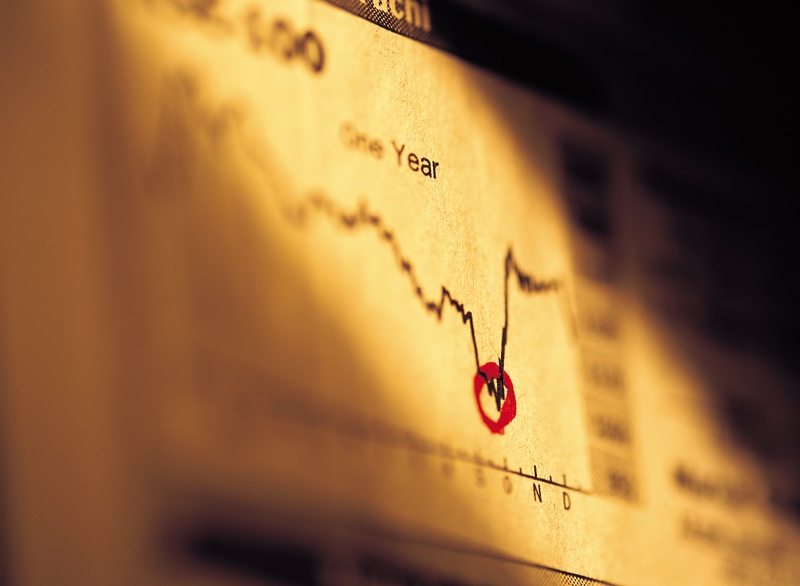
Your Funds: If complex solutions confuse you, stay put in scary markets
The most simplistic advice is often the best, and there’s little that is simpler or better than “Stay invested.” Countless studies have shown that investors have terrible timing, awful instincts and, accordingly, bad results. The landmark Quantitative Analysis of Investor Behavior from Dalbar Inc. has measured investment results compared to the stock market for a quarter-century, and it has repeatedly proved that investments do better than investors.
- Richmond Times-Dispatch
- |
- 9/20/2019
- Go To Article
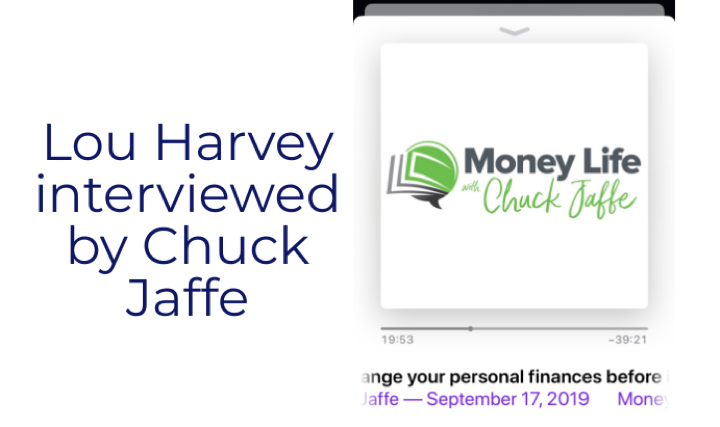
Money Life with Chuck Jaffe: Use the rate cuts to change your personal finances before it's too late (Podcast)
Lou Harvey from DALBAR Inc. discusses a strategy that should help investors stay put, literally, in the next market downturn.
- Money Life with Chuck Jaffe
- |
- 9/17/2019
- Go To Article
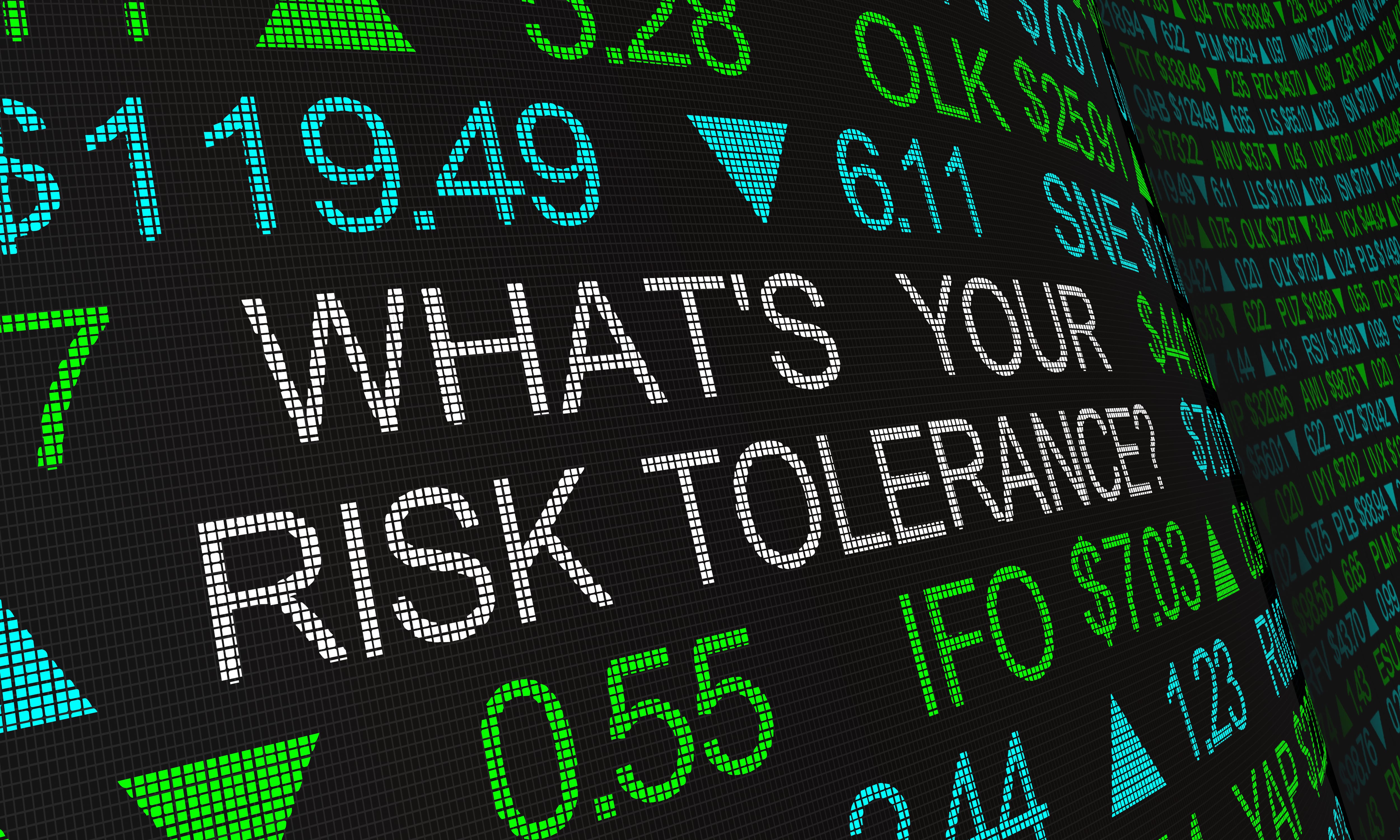
The Asset Allocator: Dalbar's Louis Harvey On What Drives Investors To Lose Money (Podcast)
Investment consultancy Dalbar’s latest research suggests that it is a mistake for advisors to assume that investors have a static risk tolerance. To the contrary, it changes constantly – on the basis of both market conditions and the client’s constantly shifting personal status. In this podcast interview (14:07), Dalbar’s Louis Harvey suggests that advisors need to constantly assess and re-assess their clients' risk tolerance, and engage in behavioral coaching accompanying a tolerable asset allocation.
- Seeking Alpha
- |
- 8/7/2019
- Go To Article
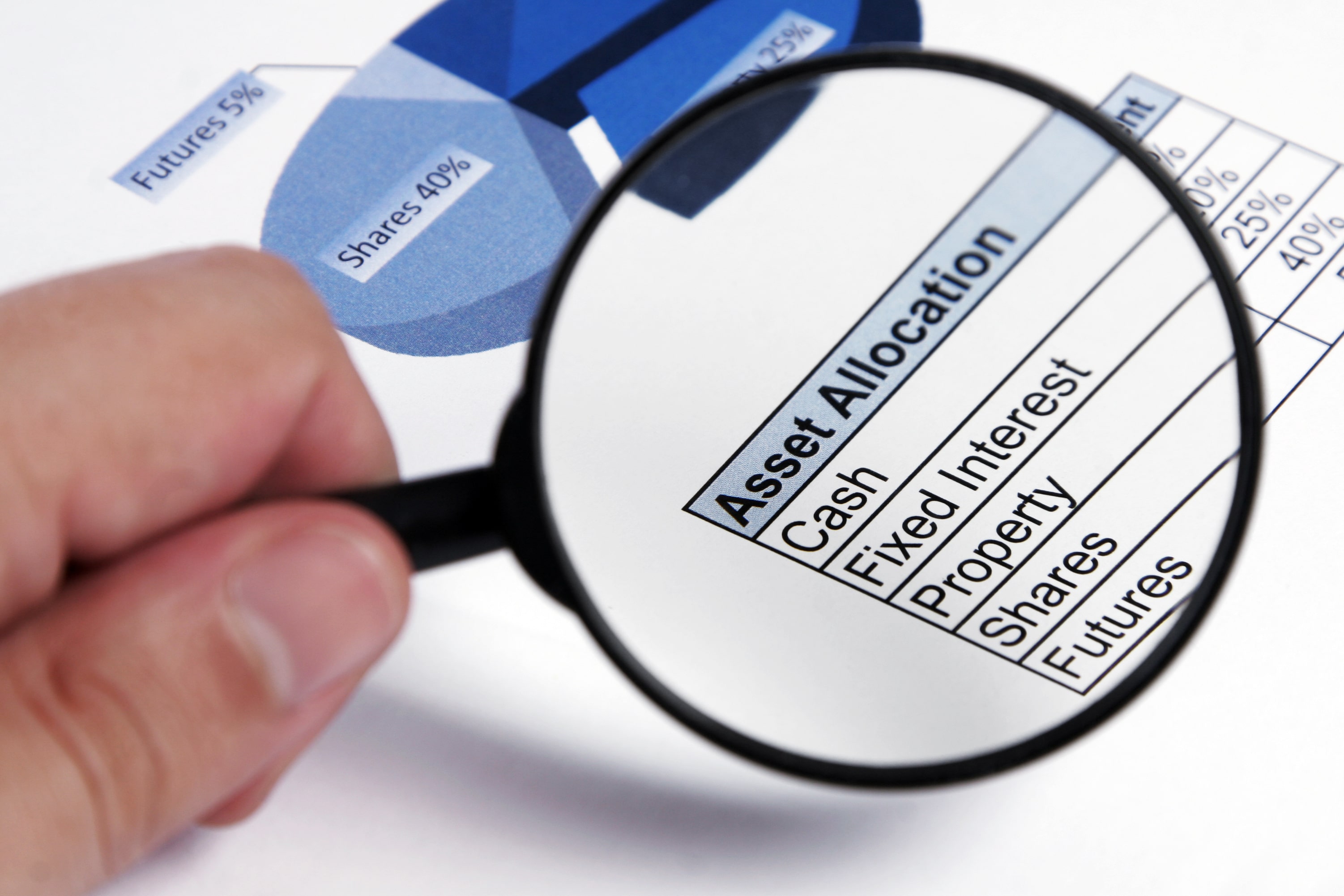
The Asset Allocator: Of Models And Marketing (Podcast)
This podcast (6:33) relates some examples of adulated investors who turned out to be in the main great marketers, and draws attention to a hard-to-market investment with which many investors have actually succeeded. The moral of the story is for advisors to focus firmly on keeping their clients invested for long-term success. Incidentally, a Dalbar study shows that a particularly hated model has been more helpful to investors than models that are more successfully marketed.
- Seeking Alpha
- |
- 8/1/2019
- Go To Article

You’re making big financial mistakes – and it’s your brain’s fault
Since 1988, the stock market’s average return has been 10% per year. But stock fund investors have earned only 4.1% per year, according to Dalbar’s Quantitative Analysis of Investor Behavior.
- CNBC
- |
- 8/1/2019
- Go To Article

Investors Are Usually Wrong. I’m One of Them.
Forget about getting everything right. Most people are so consistently wrong that merely avoiding major errors is enough to set you apart from the pack.
That is the message in the latest data from Dalbar, a Massachusetts research firm that has been studying the behavior of mutual fund investors for 25 years.
- The New York Times
- |
- 7/6/2019
- Go To Article

How to take advantage of all the uncertainty with the stock market
As the market soured in the final months of the year, investors pulled funds to mitigate losses, according to DALBAR's 2018 Investor Behavior Study, ...
- CNBC
- |
- 6/16/2019
- Go To Article

Why Your Investment Return May Differ From the Fund Company's Returns
The habit can be costly. Research firm Dalbar publishes an annual study of investor behavior, which tracks cash flows in and out of stock funds. In 2018, the average investor trailed Standard & Poor’s 500-stock index by 5.0 percentage points. (The S&P 500 lost 4.4% in 2018, which means the average investor lost 9.4%.) “Judging by the cash flows we saw, investors sensed danger in the markets and decreased their exposure, but not nearly enough to prevent serious losses,” says Dalbar’s Cory Clark.
- Kiplinger
- |
- 5/17/2019
- Go To Article

Investors Attempt To “Time” The Market And Lose Money
If you want to be an investor, don’t be an average one. It can very well be a ridiculous proposition. The individual investors on an average would make mistakes, just like they did last year and this is evident from the report that was published in the latest report of Dalbar, the financial research company.
- Market News World
- |
- 5/10/2019
- Go To Article

Investors are losing thousands trying to 'time' the market
Dalbar also found that over a 30-year period it gets worse — the average investor loses almost 6 percent a year compared with the market's return.
- NY Post
- |
- 5/5/2019
- Go To Article

The signal for avoiding market’s next painful downturn comes from within
...But after reading my column last week about the Dalbar Quantitative Analysis of Investor Behavior study showing just how lousy investor timing was in 2018, he wanted help to improve his timing...
- The Seatle Times
- |
- 4/20/2019
- Go To Article

WEALTH HEALTH: Investors failed the downturn test of 2018
The latest Quantitative Analysis of Investor Behavior study from Dalbar Inc. showed that average investors lagged the Standard & Poor’s 500 Index both in good times and bad during 2018, but investors got it the most wrong late in the year when the market got ugly.
Dalbar’s study, which has measured investment results compared to the market for a quarter-century now, has long shown that investments do better than investors. The problem is that investors typically buy into stocks and funds only after there has been a run of good performance and bail out when they suffer declines.
- Wicked Local
- |
- 4/12/2019
- Go To Article

What Happens When You Miss the Best Days in the Stock Market?
...Investment research firm Dalbar publishes an annual survey of the average investor's performance versus the benchmark. Dalbar studied retail equity and fixed-income mutual fund flows (money in and out of the fund) each month from Dec. 31, 1997 to Dec. 31, 2017 to calculate the "average investor" return. The average investor performed below average when compared to buying and holding the S&P 500 index...
- Nasdaq
- |
- 4/11/2019
- Go To Article

Wealth Matters: Stock market ‘guru’ same as ‘charlatan’
We are all influenced by our emotions, our hopes and fears. Such is being human. But these emotions do not always lead to the best decisions. When you add our attitudes about money to the mix, the results can be quite complicated.
- Daily Republic
- |
- 4/8/2019
- Go To Article
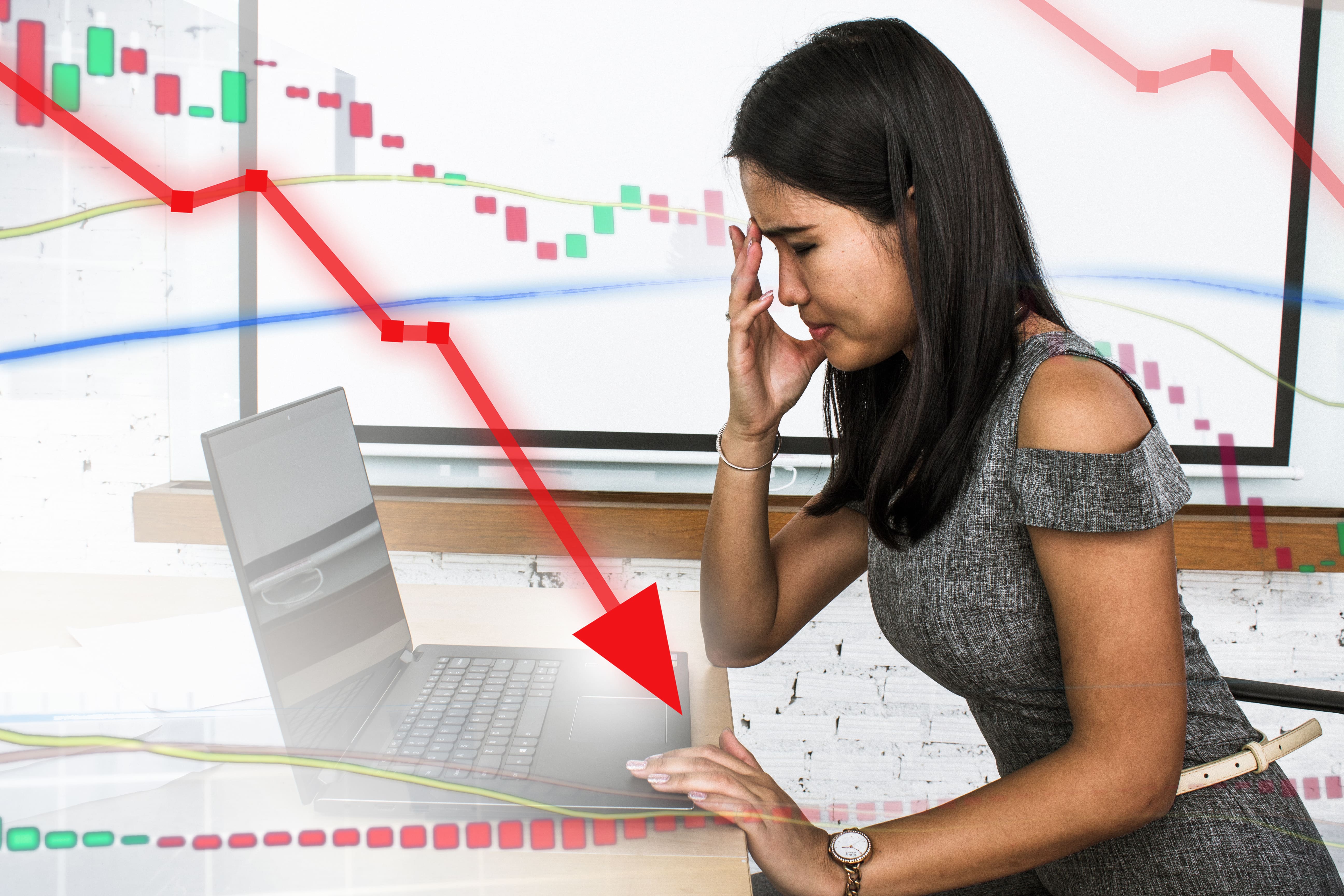
Investors Bailed Out of Stock in 2018 and Got Double-Slammed
The average investor fled from the stock market and ended up losing twice what the S&P 500 did, Dalbar says.
They did it again. The average investor took money out of the stock market in 2018, a year that suffered from two painful corrections. And their investment performance was worse than the market’s, according to a survey by research firm Dalbar.
- Chief Investment Officer
- |
- 4/5/2019
- Go To Article

Opinion: Investors’ widely-held beliefs about ETFs and index funds may be wrong
Low-cost funds may be fixing the wrong problem, new data suggest
A new study has just shaken one of the biggest investment myths on Main Street.
An analysis of mutual fund stock trades over the past two decades has thrown into question the rationale that has sent everybody and her grandmother stampeding into low-cost index funds and exchange traded funds.
- MarketWatch
- |
- 4/3/2019
- Go To Article

DALBAR: U.S. Investors Lost Twice As Much As The S&P 500 In 2018
A combination of volatile market conditions and bad timing caused the average U.S. investor to lose twice as much as the S&P 500 in 2018, according to a new study from DALBAR.
The research firm’s latest Quantitative Analysis of Investor Behavior (QAIB) found that investors were actually blown away by market turmoil last year, losing 9.42 percent over the course of 2018, compared with a 4.38 percent retreat by the S&P.
- FA-Mag.com
- |
- 3/26/2019
- Go To Article
Talk to us about how we can help you achieve your goals or customize an offering for your unique needs!


